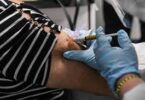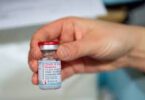Monitoring Desk
People with vitamin D deficiency are more vulnerable to diabetes and have up to five times more chances of developing the disease, ScienceDaily reports.
The conclusion comes from a decade-long study by the University of California San Diego School of Medicine, in collaboration with Seoul National University in South Korea.
The research, conducted from 1997 until 2009, explores the impact of vitamin D deficiency by analyzing how it affects the risk of pre-diabetes and type 2 diabetes.
Vitamin D can be assimilated in the body either through diet or by exposure to sun rays. Colloquially known as the “sunshine” vitamin, it is the only vitamin that can be naturally produced by the skin as a reaction to sunlight.
Once absorbed into the body, vitamin D is converted by the liver into a chemical called 25-hydroxyvitamin D, notes HealthLine.
The recent study monitored 25-hydroxyvitamin D levels in 903 people over a period of 12 years.
The researchers set out with a predetermined healthy level of 25-hydroxyvitamin D, which was identified to be of 30 nanograms per milliliter (ng/ml).
This value, which is 10 ng/ml higher than the 2010 recommendation by the Institute of Medicine, was used as a standard for comparison.
The reason why the healthy level of vitamin D was upped for the purpose of this study has to do with the recommendation of other health advisory groups, which advocate for a nearly double level, UC San Diego explains in a press release.
These groups state that a healthy level of 25-hydroxyvitamin D should reach as much as 50 ng/ml, notes the university.
The study revealed that higher levels of 25-hydroxyvitamin D, which exceeded the 30 ng/ml and the 50 ng/ml marks, cut diabetic risk by two-thirds and 80 percent, respectively.
“We found that participants with blood levels of 25-hydroxyvitamin D that were above 30 ng/ml had one-third of the risk of diabetes and those with levels above 50 ng/ml had one-fifth of the risk of developing diabetes,” said study co-author Dr. Sue Park of Seoul National University.
According to Dr. Cedric Garland, study co-author and a professor of family medicine and public health at UC San Diego, study participants with 25-hydroxyvitamin D levels lower than 30 ng/ml were considered to be suffering from vitamin D deficiency.
In this group of people, the risk of diabetes was shown to have increased five-fold over the 12-year study period compared with people that had 25-hydroxyvitamin D levels of 50 ng/ml.
The people enrolled in the study, which was published this week in the journal PLOS One, had an average age of 74 and no indication of pre-diabetes or diabetes at the beginning of the research.
By 2009, the scientists recorded 47 new cases of type 2 diabetes and 337 new cases of pre-diabetes in the study participants.
Garland explains that more research is needed in order to establish whether a high level of 25-hydroxyvitamin D can actually prevent type 2 diabetes
“But this paper and past research indicate there is a strong association,” he points out in the news release.
The university details that 30 ng/ml levels of 25-hydroxyvitamin D can be obtained through vitamin D supplements of 3,000 to 5,000 international units (IU) per day. These doses can be reduced by spending 10 to 15 minutes a day outside enjoying the sun. The optimum time of day to increase exposure to sunlight is noon, shows the news release.
By current recommendations of the National Institutes of Health, the average daily dose of vitamin D is 400 IU for children up to 1 year, 600 IU for ages 1 to 70 years, and 800 IU for people over 70.
The best food sources that increase the intake of vitamin D are fish and seafood, such as salmon, sardines and shrimp, yogurt and fortified milk, egg yolk, cereal, and orange juice, states UPI.






